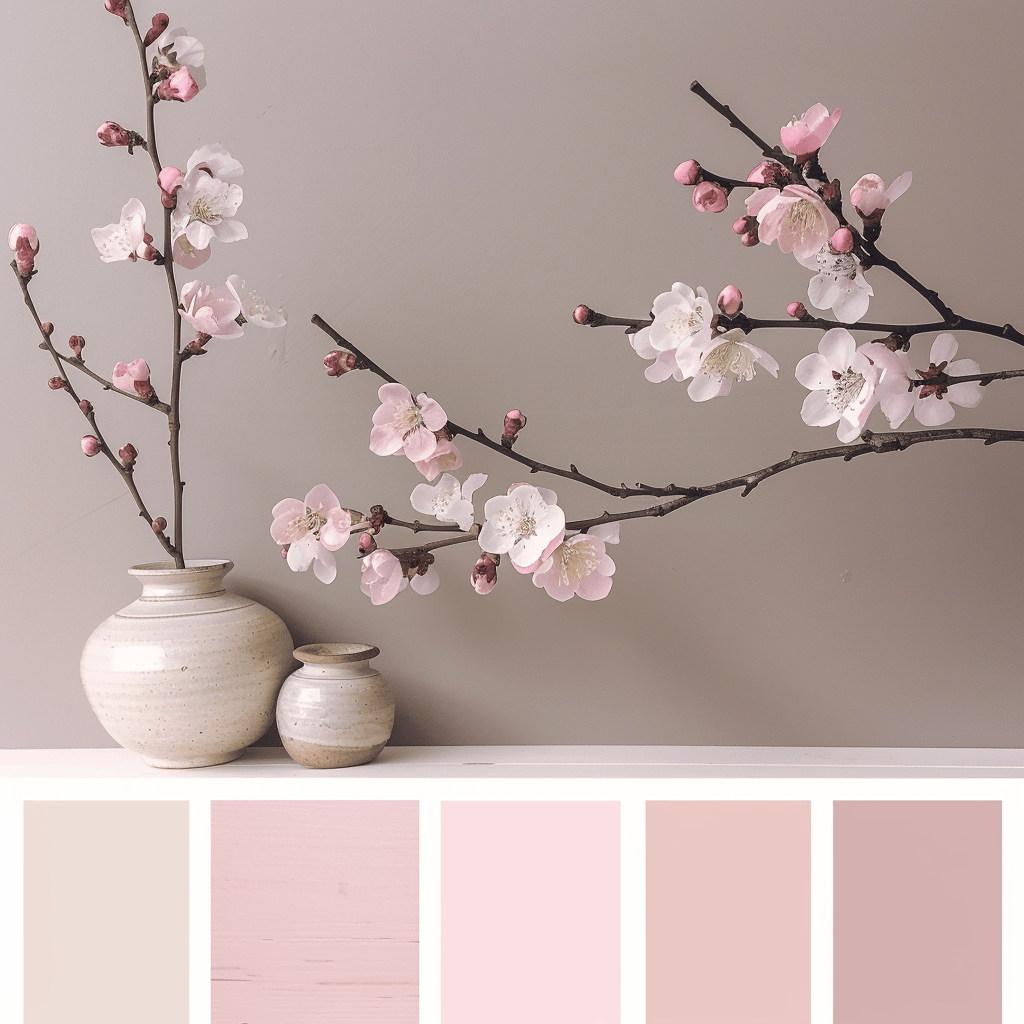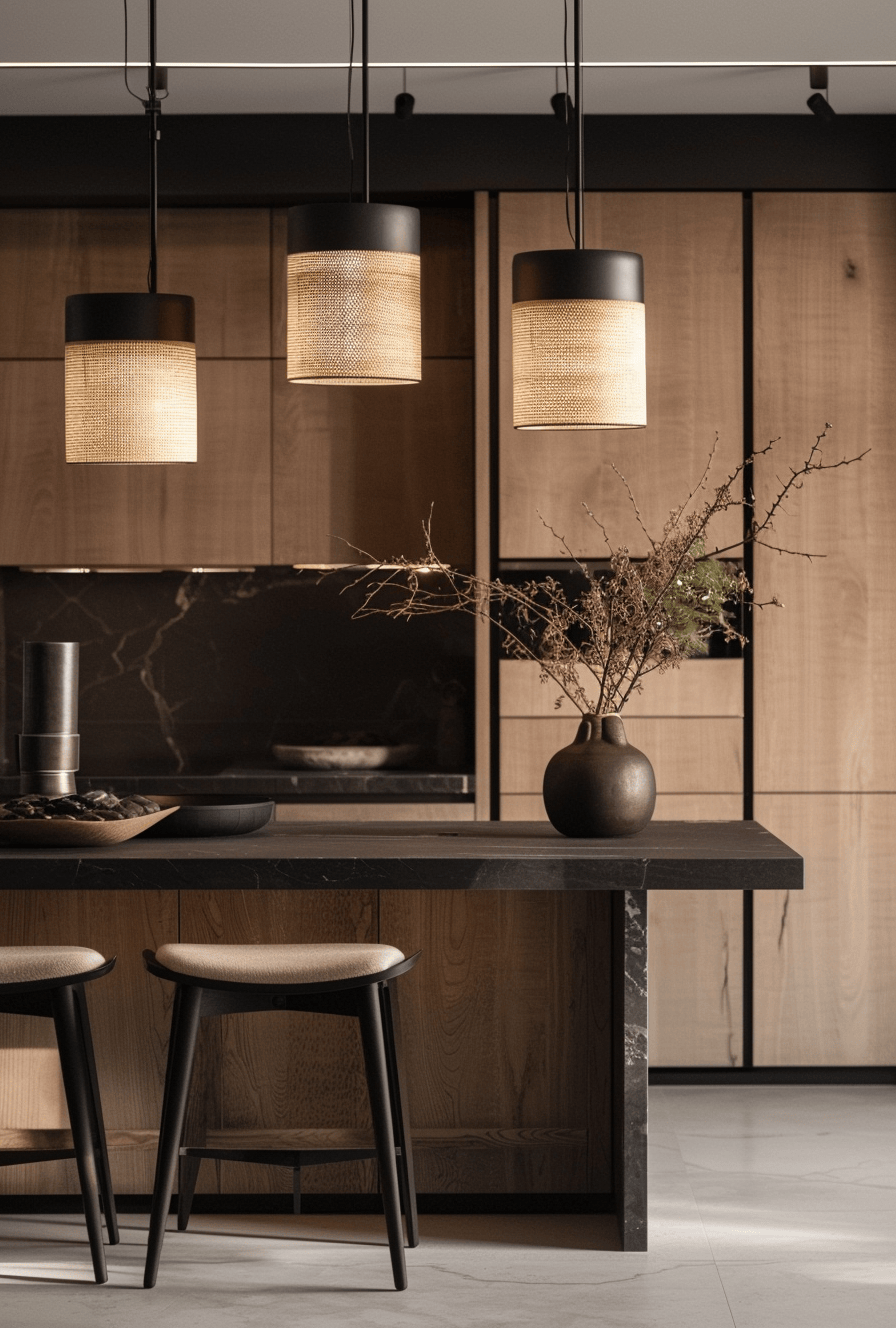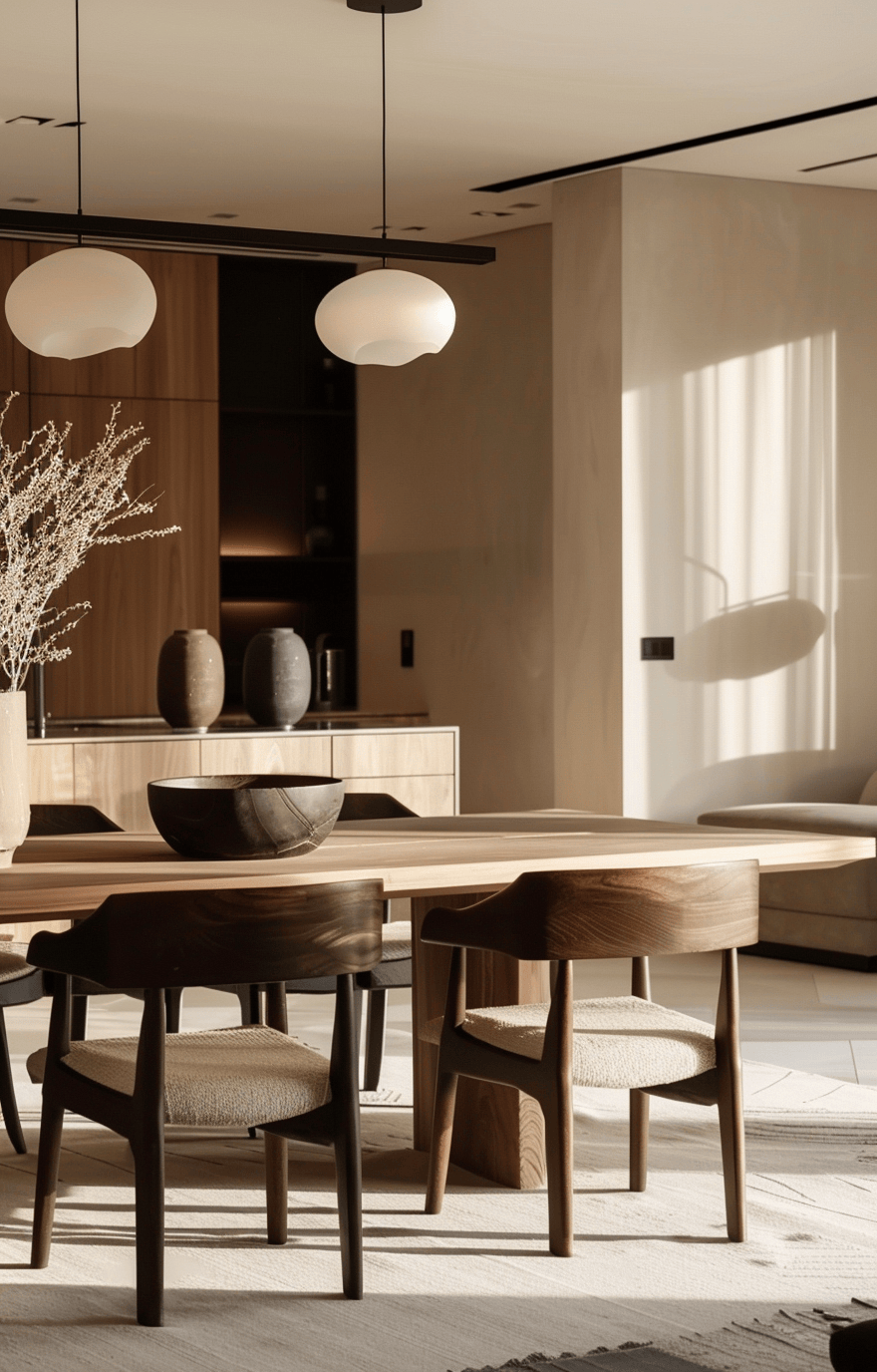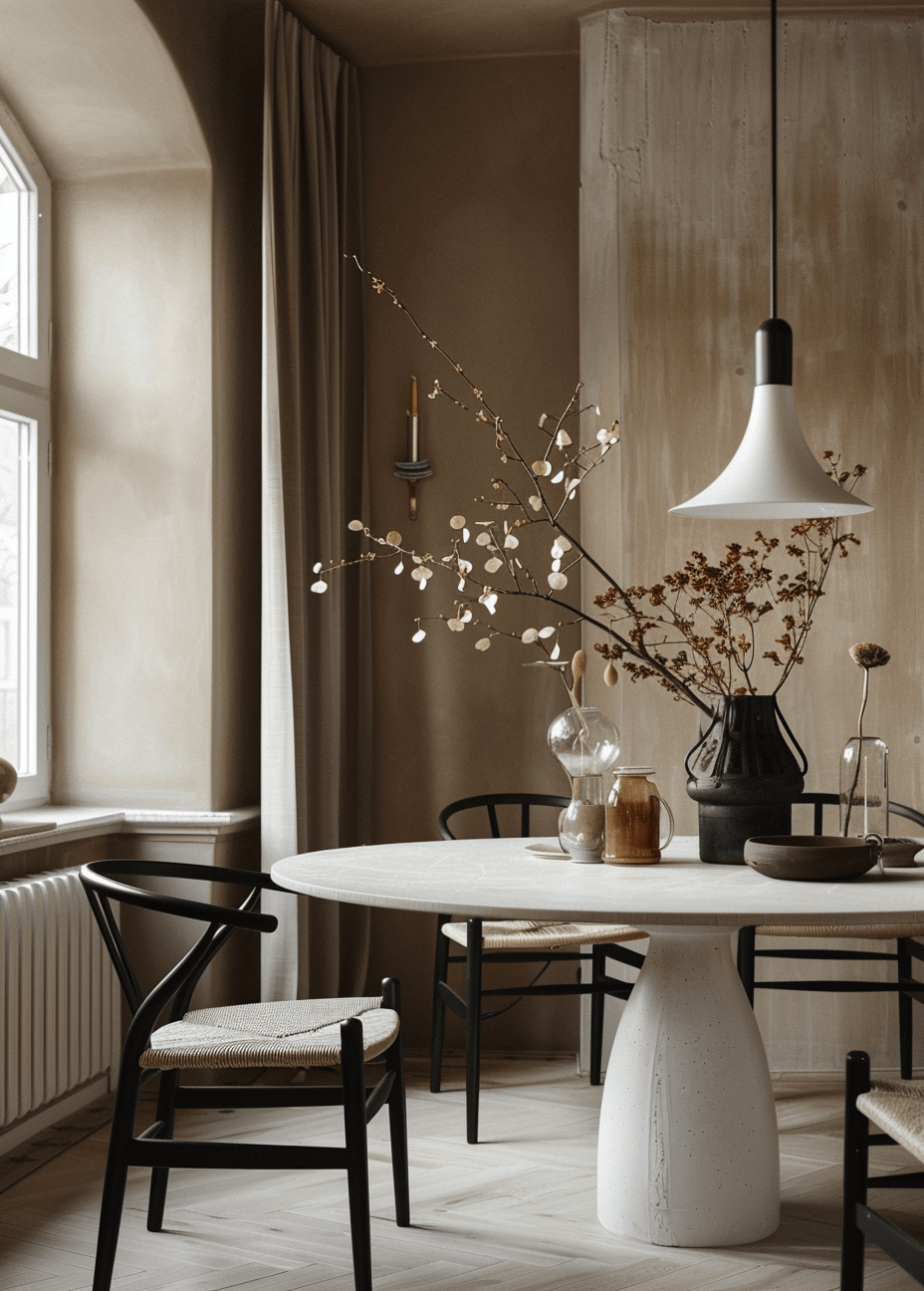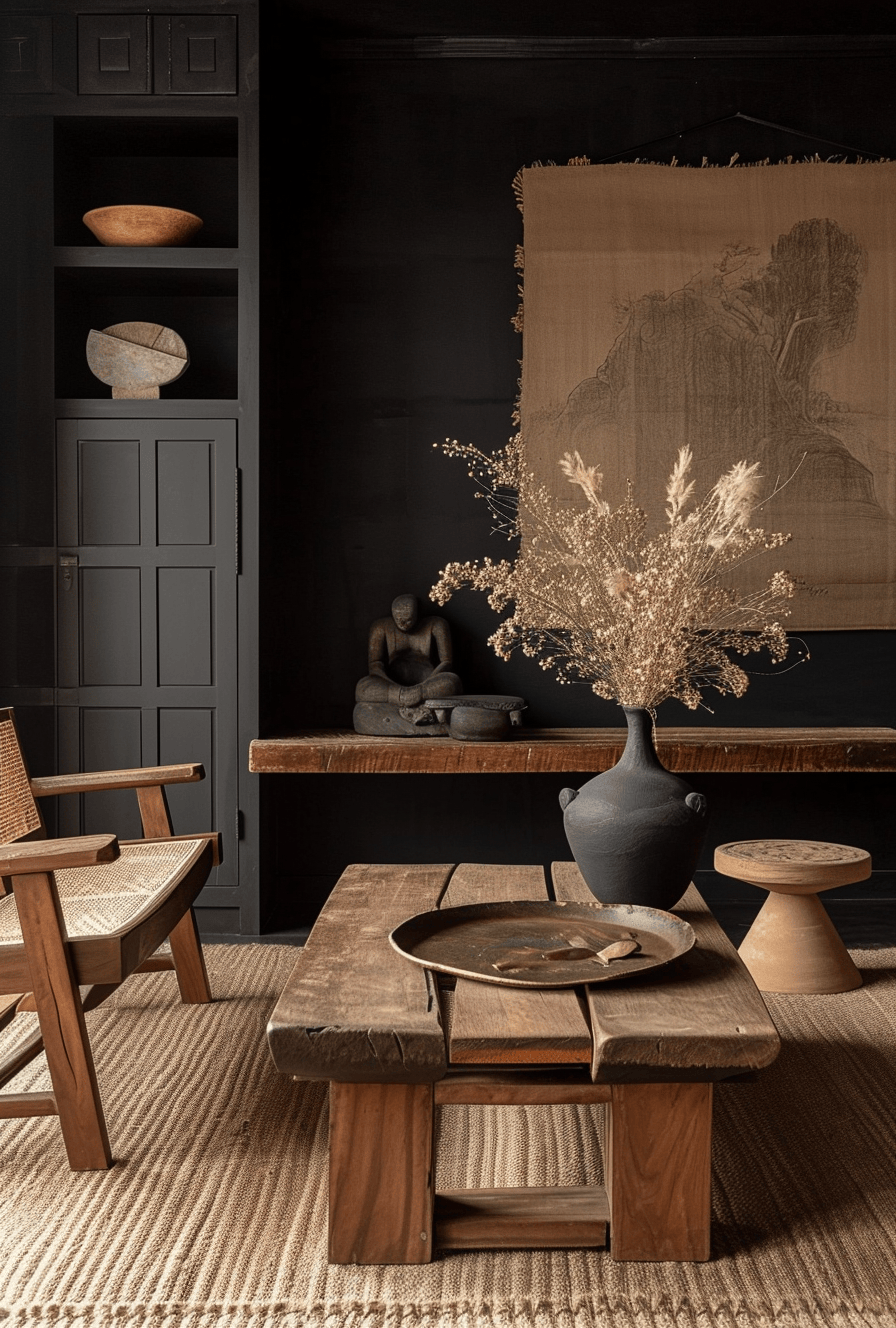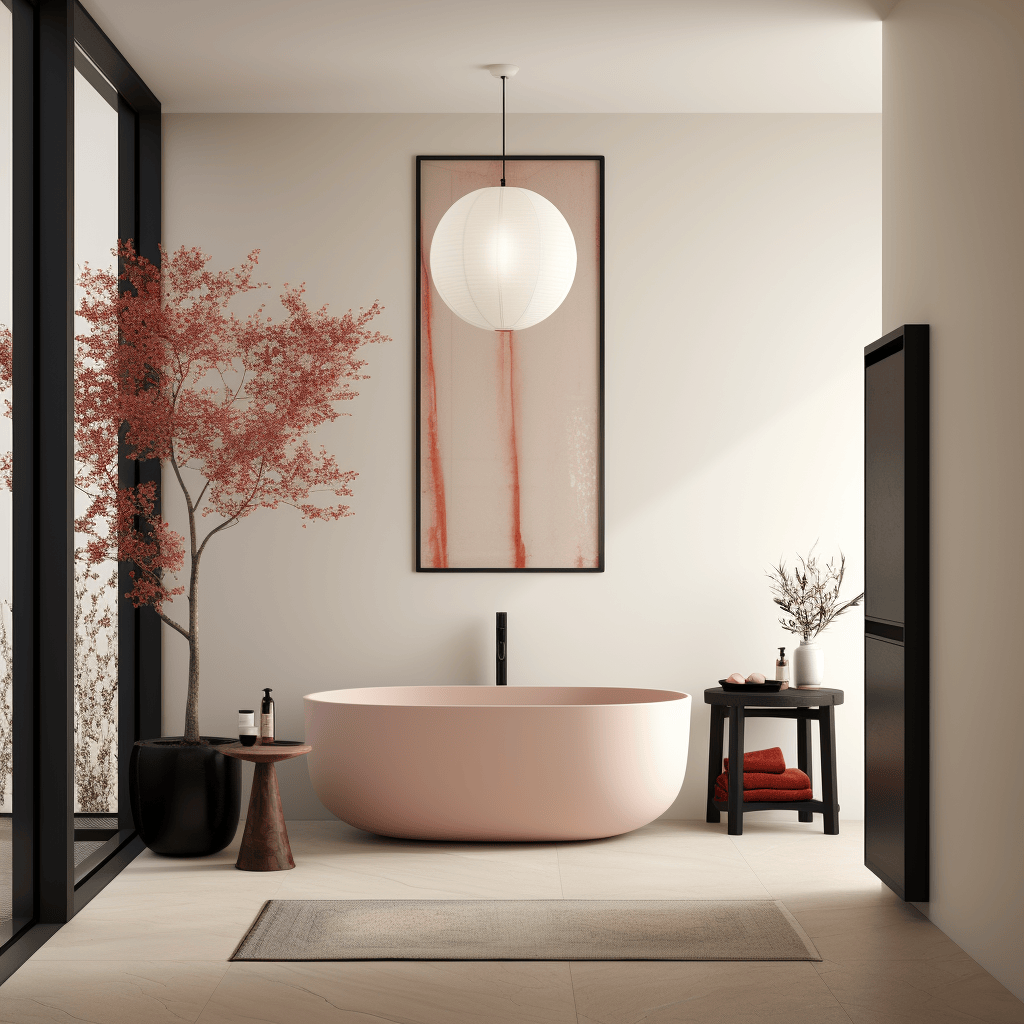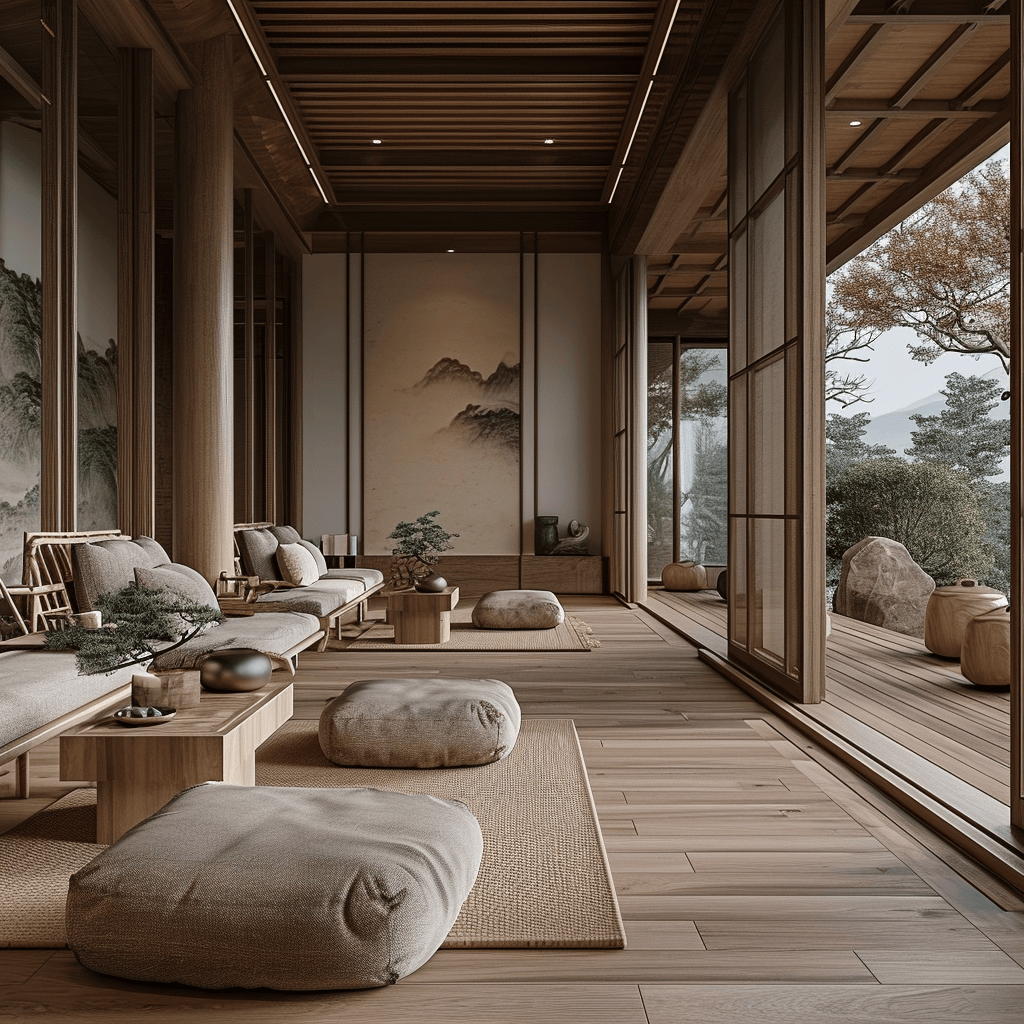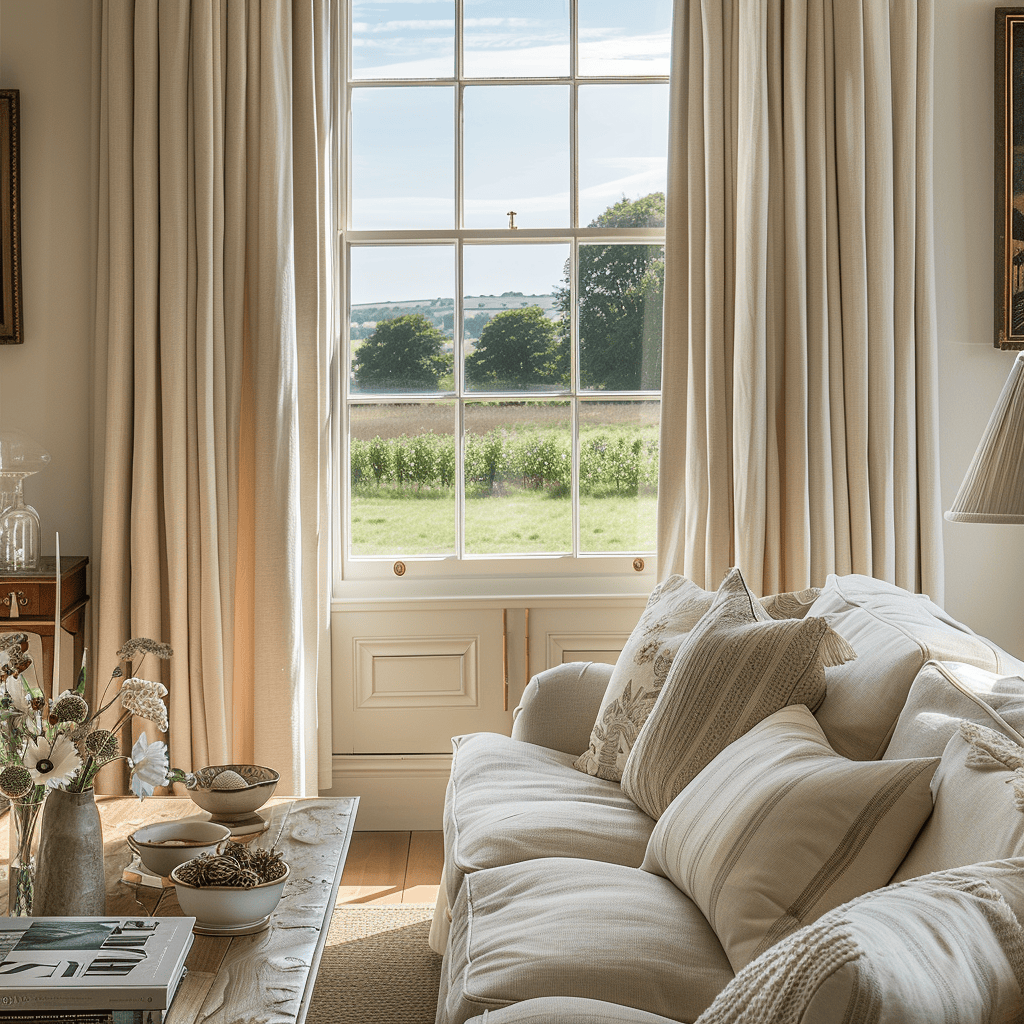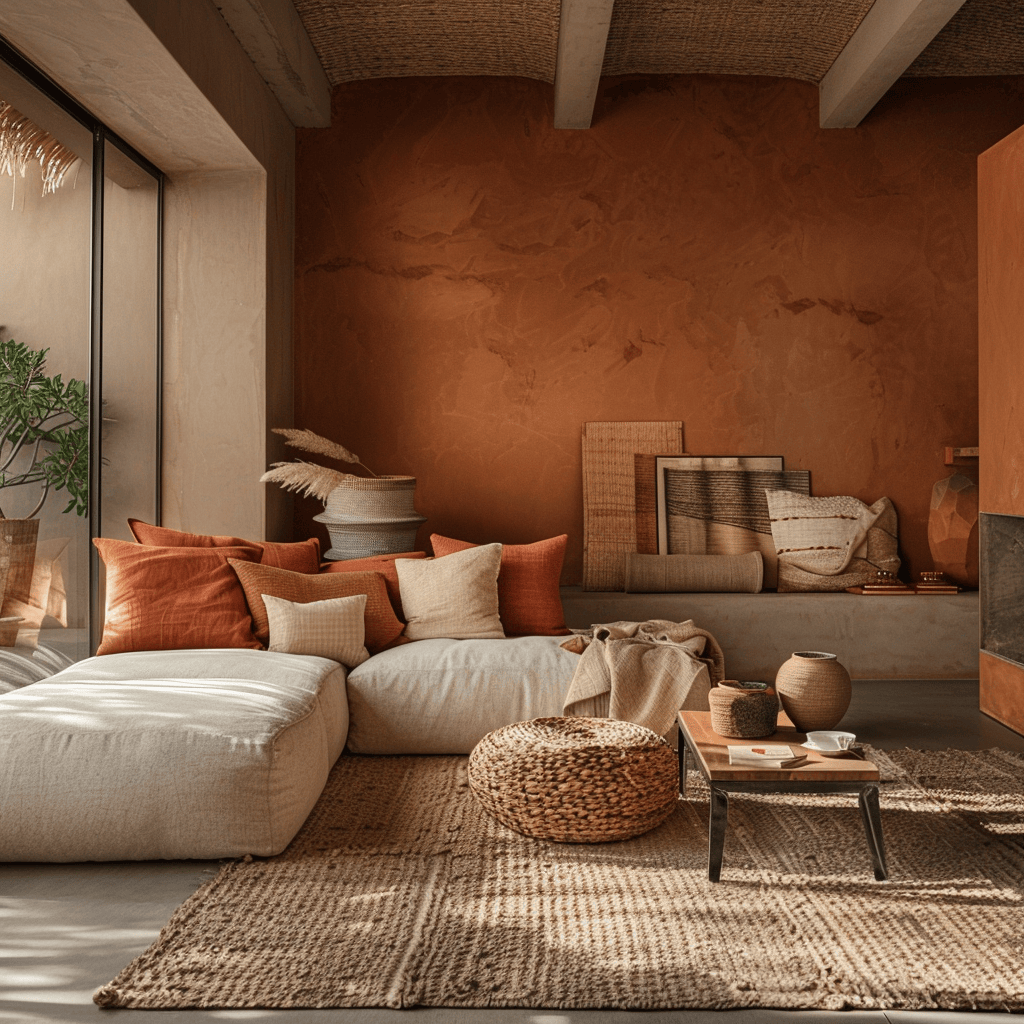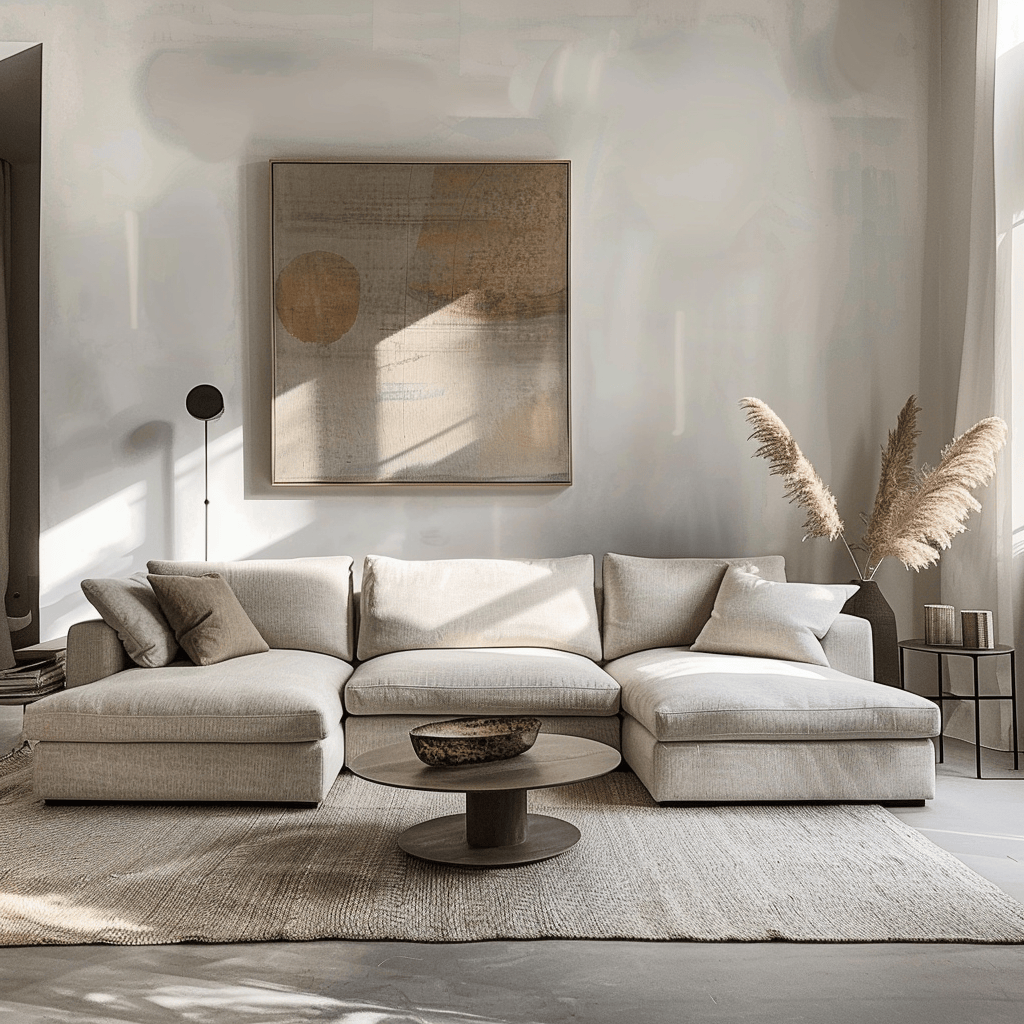The Insider Secrets of the Japandi Color Palette
I've been diving deep into the world of Japandi lately, and let me tell you, it's been nothing short of a revelation. It's like discovering the perfect recipe that makes your soul sing, you know? Japandi isn't just a design trend; it's a love letter to the art of blending simplicity with warmth, creating spaces that hug you back. Imagine your living room, bedroom, bathroom, hallway, kitchen, and dining room all whispering words of peace and balance. Sounds dreamy, right? Well, dream no more, because it's totally achievable! The Japandi color palette is a harmonious blend of Scandinavian and Japanese design principles, favoring simplicity, natural elements, and a calming atmosphere.
Primary Colors
Primary colors in a Japandi palette are foundational, setting the tone for the entire space. These colors are typically used on walls, large pieces of furniture, and significant design elements.
 2/40
2/40
Neutral Whites
Symbolizing purity and simplicity, neutral whites serve as a clean backdrop, making spaces appear larger and brighter.
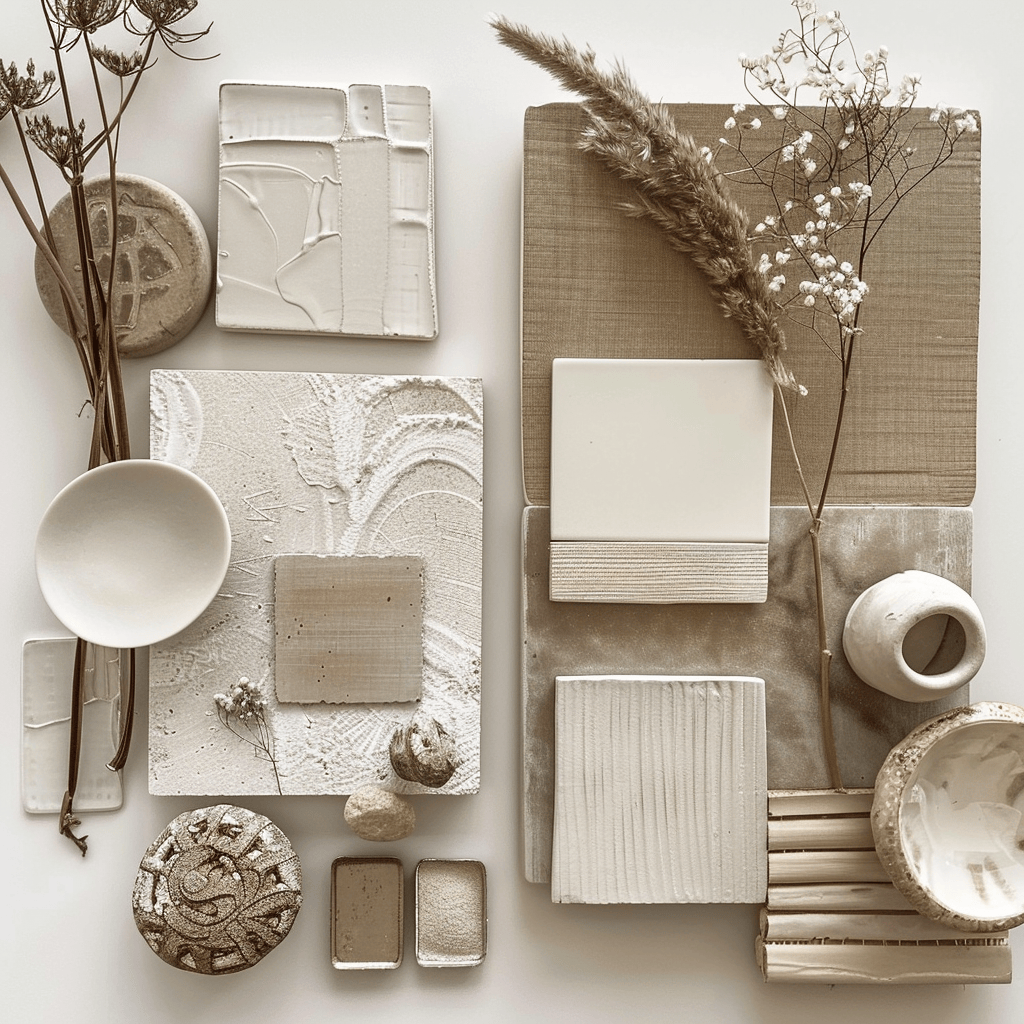 3/40
3/40
Soft Greys
Providing a subtle depth and sophistication, soft greys add nuance to the minimalist aesthetic without overwhelming the senses.
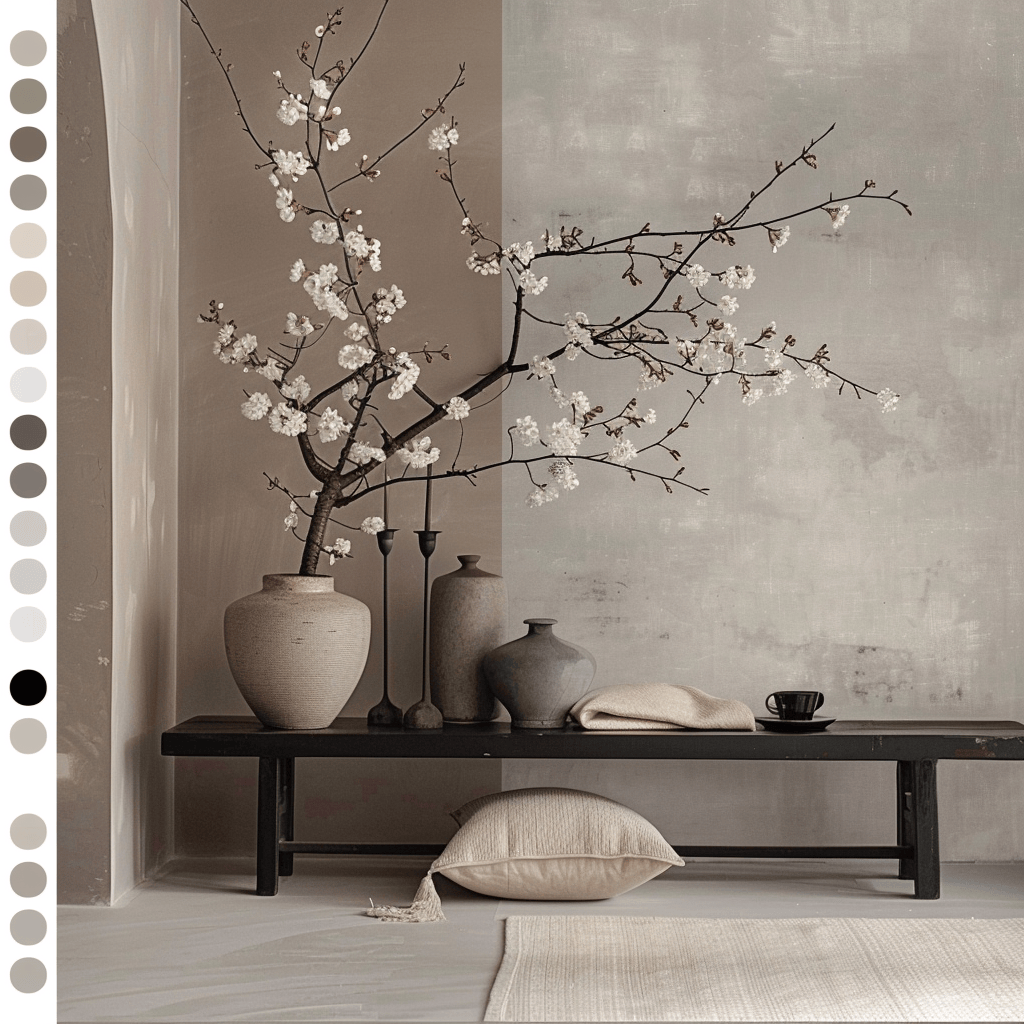 4/40
4/40
Secondary Colors
Secondary colors complement the primary palette, adding warmth and texture. These colors are often found in mid-sized furniture, flooring, and textiles.
 5/40
5/40
Earthy Browns
Inspired by natural wood, earthy browns bring warmth and a connection to nature. They range from light sandy tones to deeper walnuts, ideal for wooden furniture and flooring.
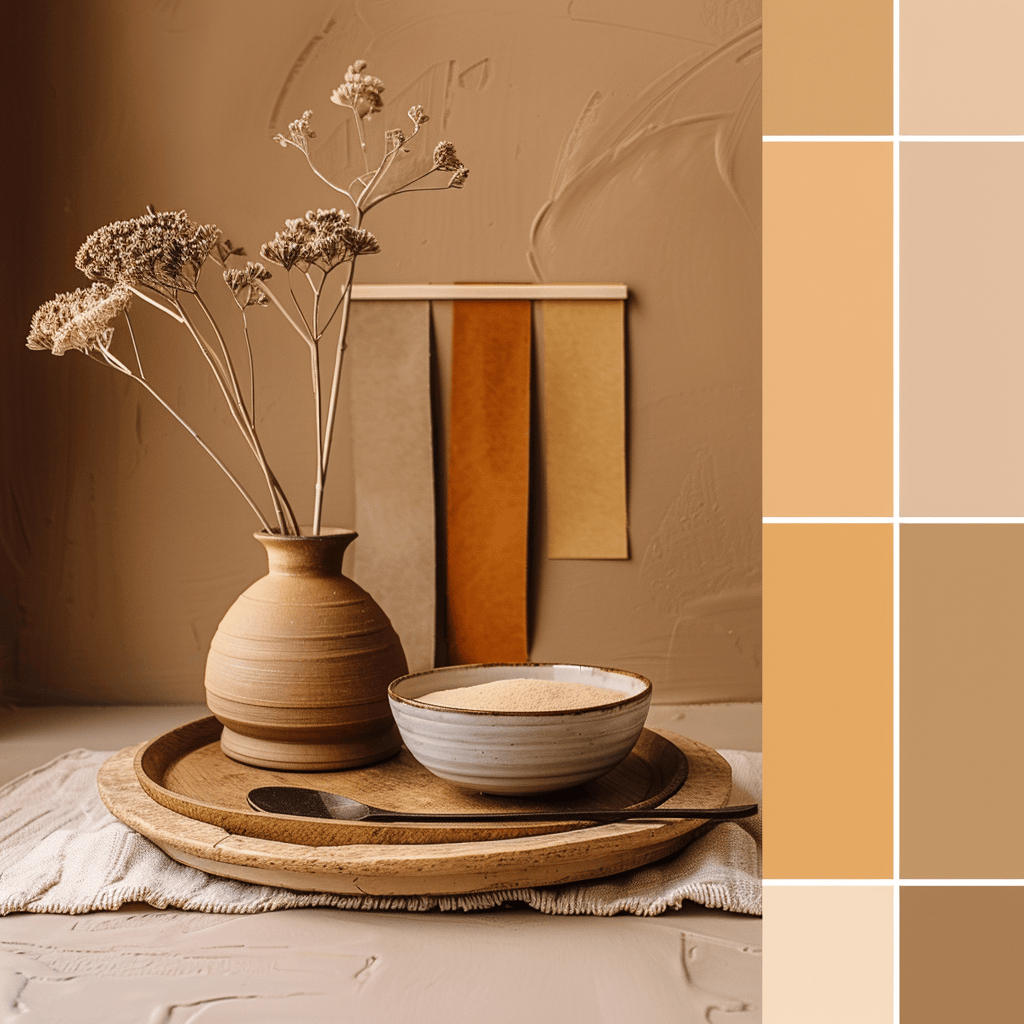 6/40
6/40
Greens
Reflecting the Japandi appreciation for plants and natural life, shades of green, from pale sage to deeper forest hues, are used to mimic the tranquility of nature, often in textiles and indoor plants.
 7/40
7/40
Accent Colors
Accent colors are used sparingly to add visual interest and personality to a room. These colors are perfect for decorative items, artwork, and small textiles.
 8/40
8/40
Black Accents
Offering a stark contrast to the lighter primary and secondary colors, black accents are used in moderation for framing, lighting fixtures, and furniture details, grounding the space and highlighting its architectural features.
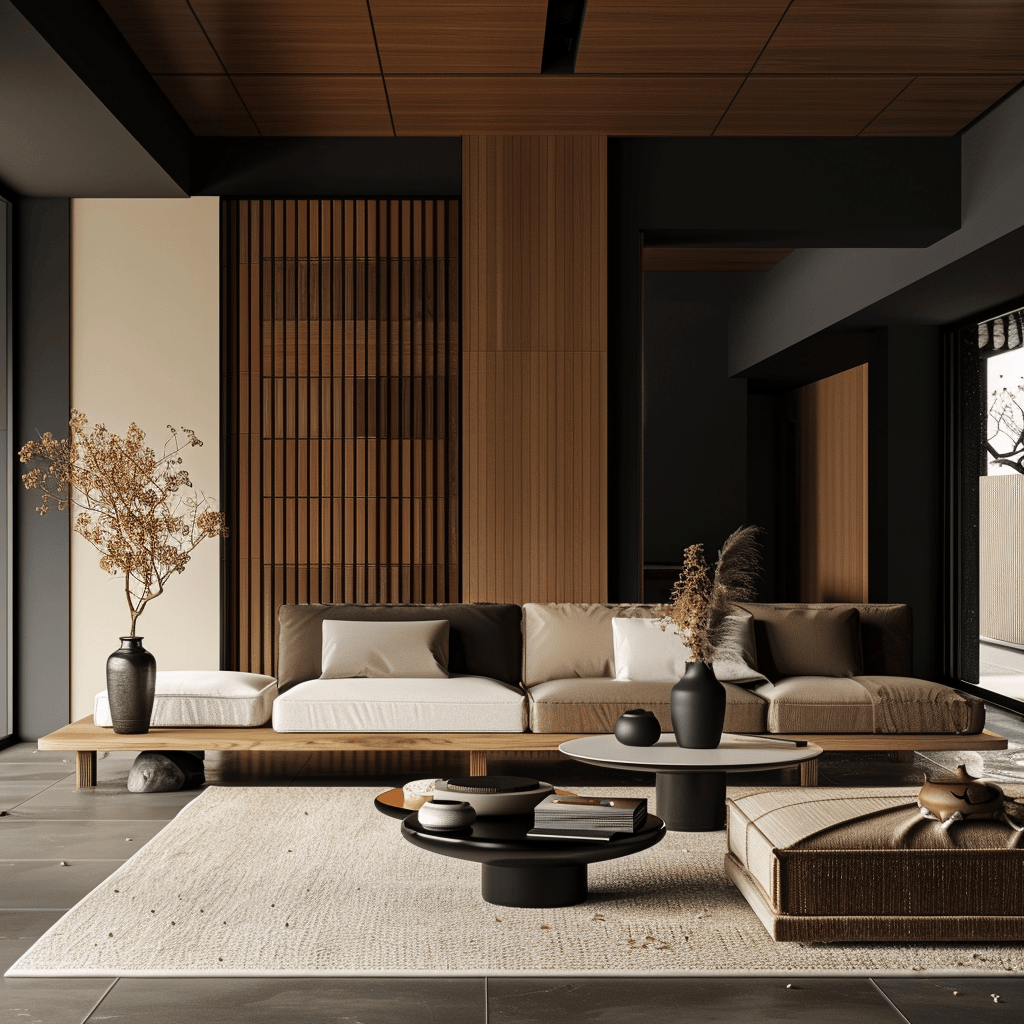 9/40
9/40
Muted Blues
These colors introduce a soft, refreshing "pop of color" to the serene Japandi palette.
Pastel Pinks
Used in accessories, artwork, or a single statement piece, they inject personality without detracting from the overall minimalist design. Incorporating the Japandi color palette into your home involves a delicate balance between these color groups.
13/40
The key is to maintain a base of neutral whites and soft greys, layer in warmth with wooden elements and touches of green, and finally, add character with subtle uses of black, muted blues, and pastel pinks as accents.
 14/40
14/40
How to apply the Japandi color palette
Living Room
1. Use Neutral Bases
Start with walls in neutral whites or soft greys to create a serene backdrop.
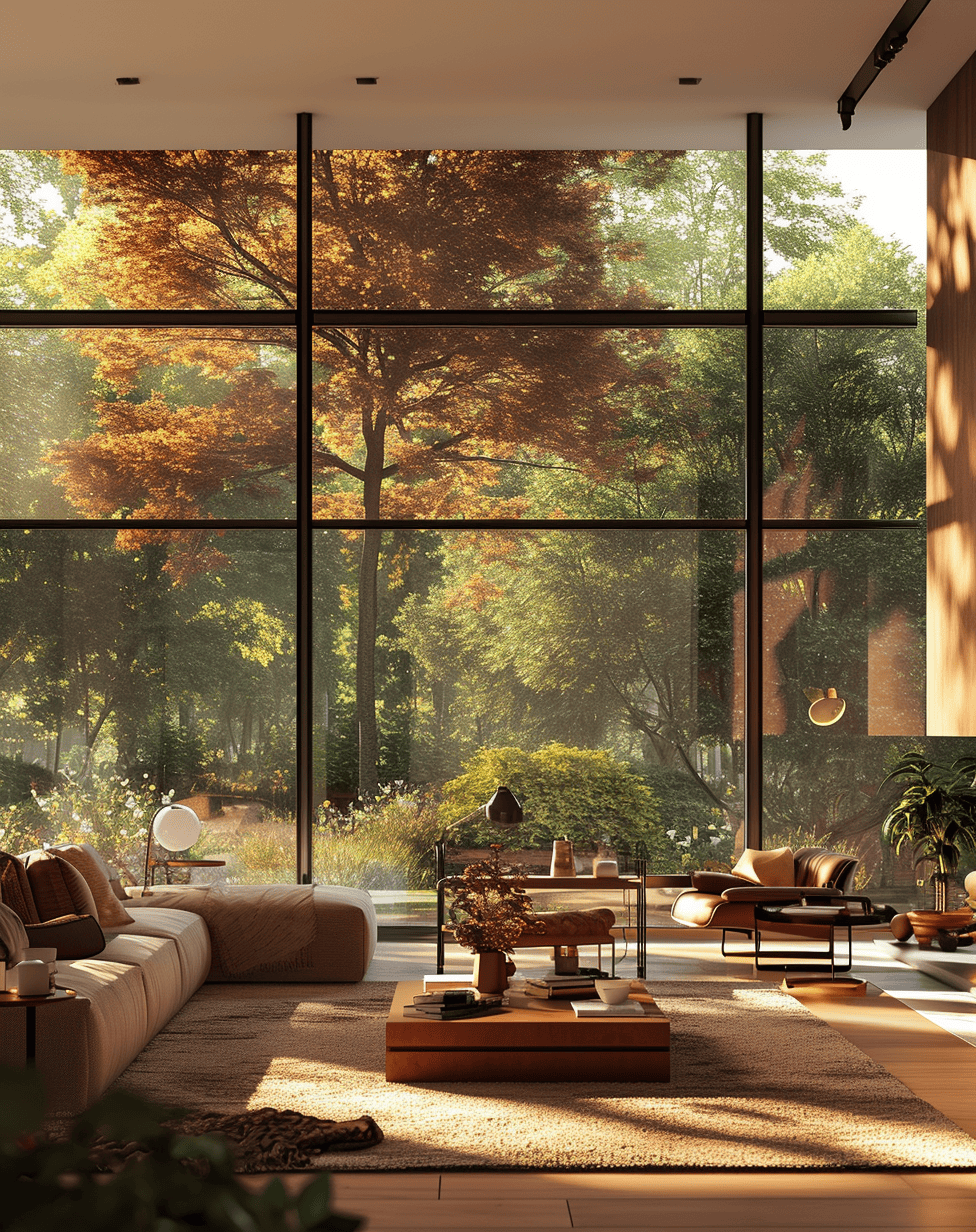 15/40
15/40
2. Wooden Elements
Incorporate furniture in natural wood tones for warmth. A statement wooden coffee table or shelving can anchor the space.
 16/40
16/40
3. Textile Accents
Add cushions, rugs, and throws in muted blues, pastel pinks, or greens to introduce color gently.
 17/40
17/40
Bedroom
1. Soft and Serene
Choose bedding in soft greys or muted tones for a calming effect. Earthy browns in wooden bed frames or nightstands enhance warmth.
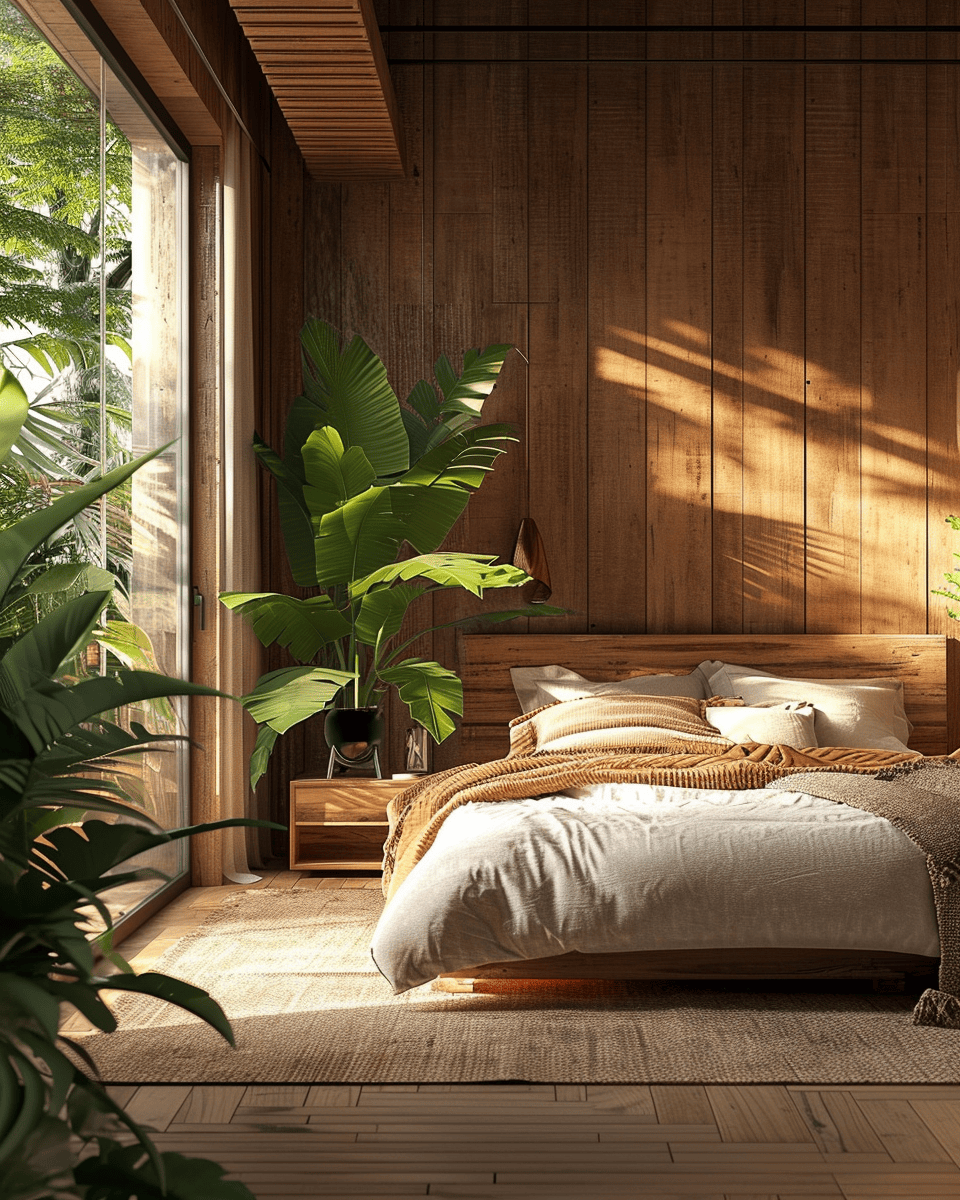 18/40
18/40
2. Minimal Decor
Use black accents sparingly, in picture frames or light fixtures, to add depth without overwhelming the space.
 19/40
19/40
Bathroom
1. Natural Materials
Opt for stone or wooden accessories to bring in earthy browns. Towels and bath mats in soft greys or neutral whites can maintain a minimalist feel.
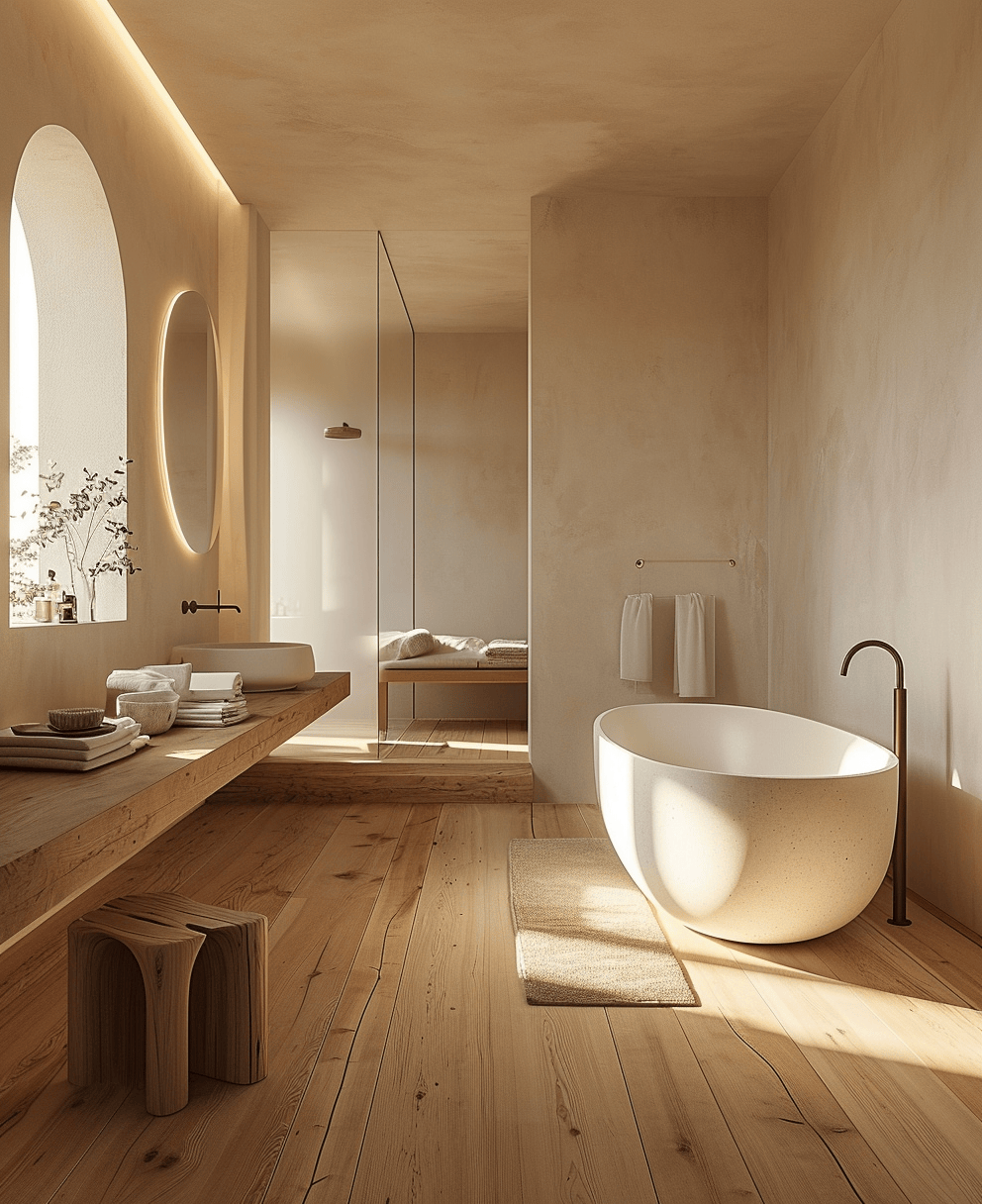 20/40
20/40
2. Green Touches
A few well-placed green plants can transform the bathroom into a spa-like retreat, adding vibrancy and life.
 21/40
21/40
Hallway
1. Welcoming Neutrals
Keep walls light and airy. A slim, dark console table or mirror frame can create an elegant contrast.
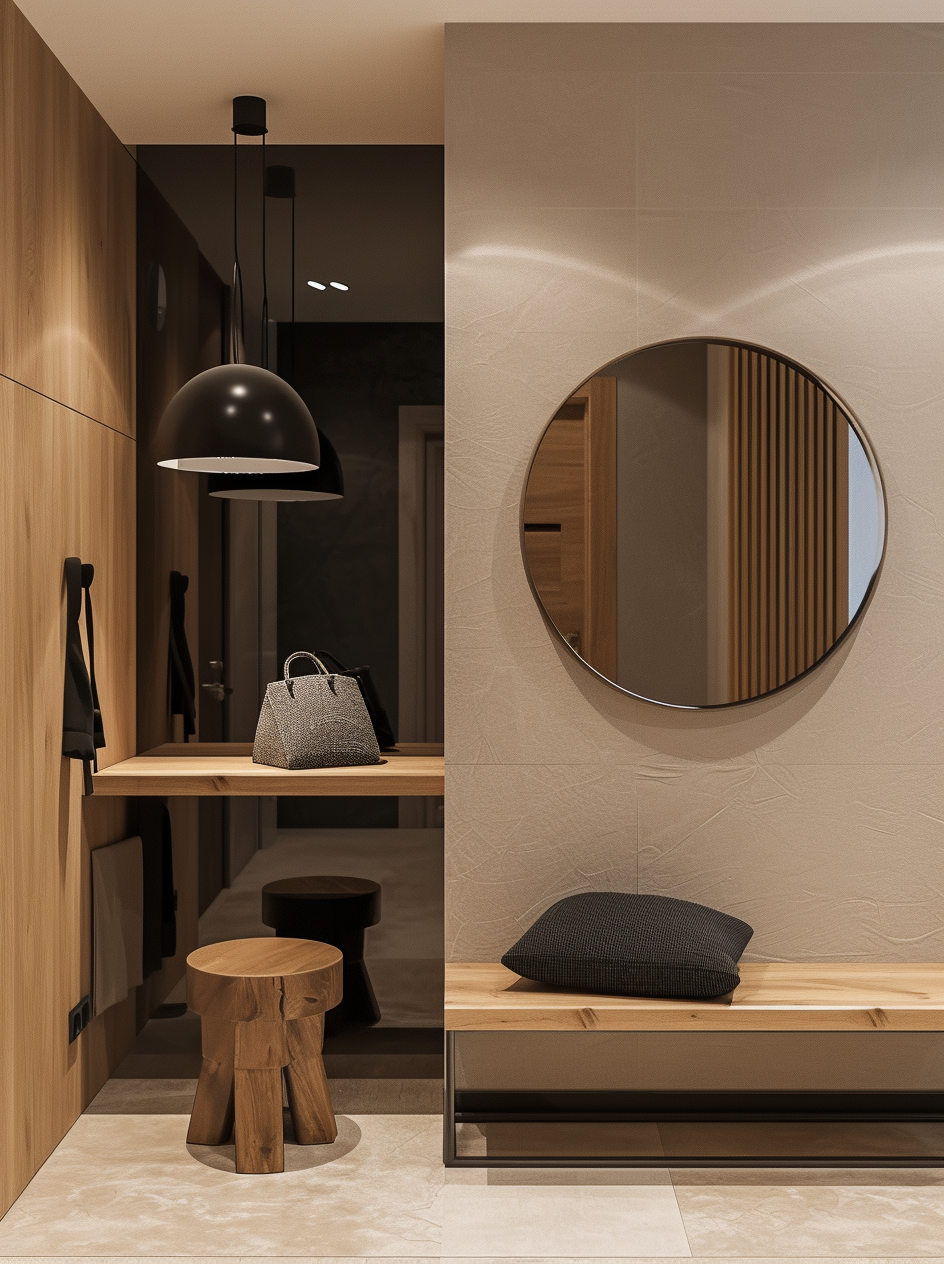 22/40
22/40
2. Functional Decor
Use hallway runners or rugs in Japandi colors for practicality and style, adding texture and color.
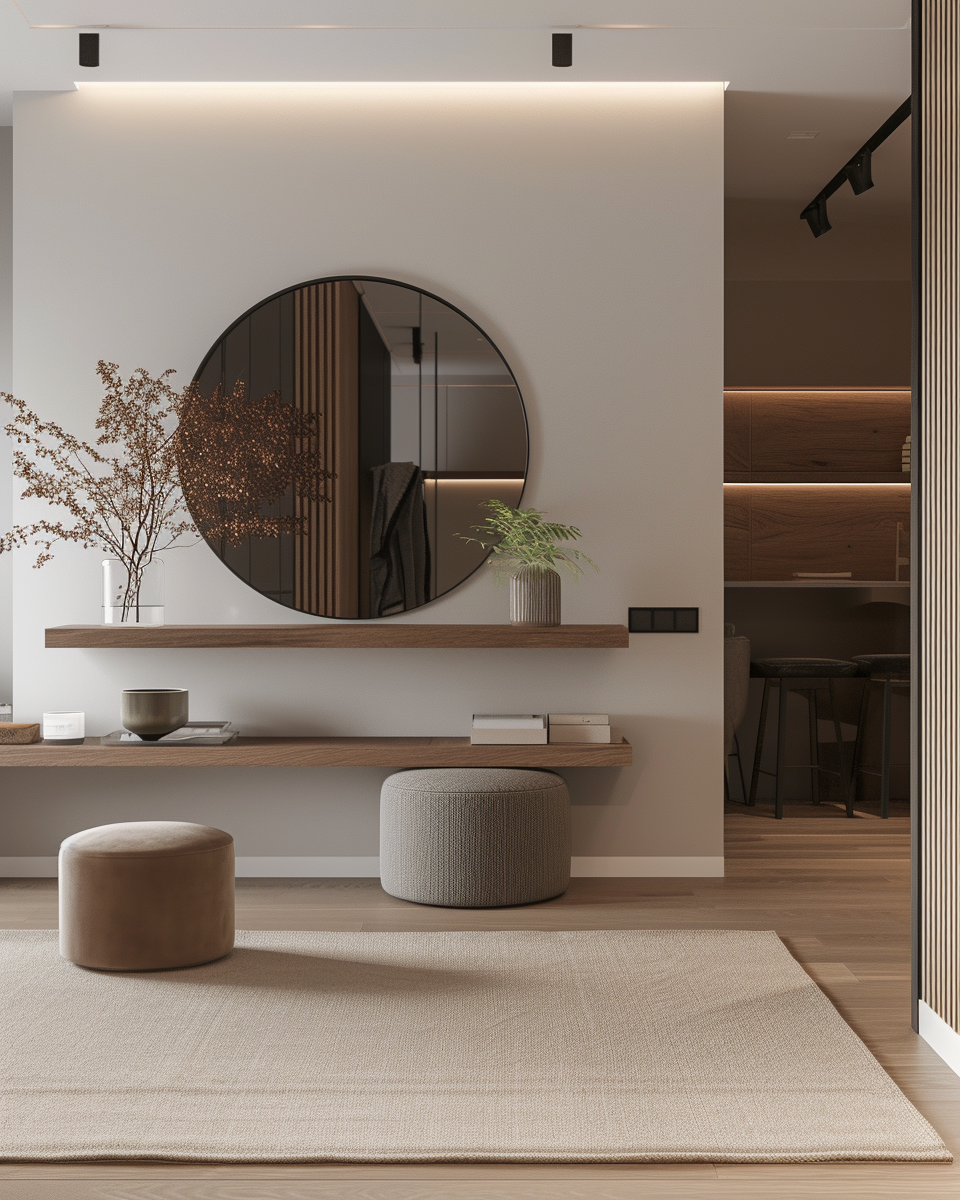 23/40
23/40
Kitchen
1. Cabinetry and Countertops
Choose cabinetry in light wood tones with countertops in white or grey to maintain a clean, minimalist look.
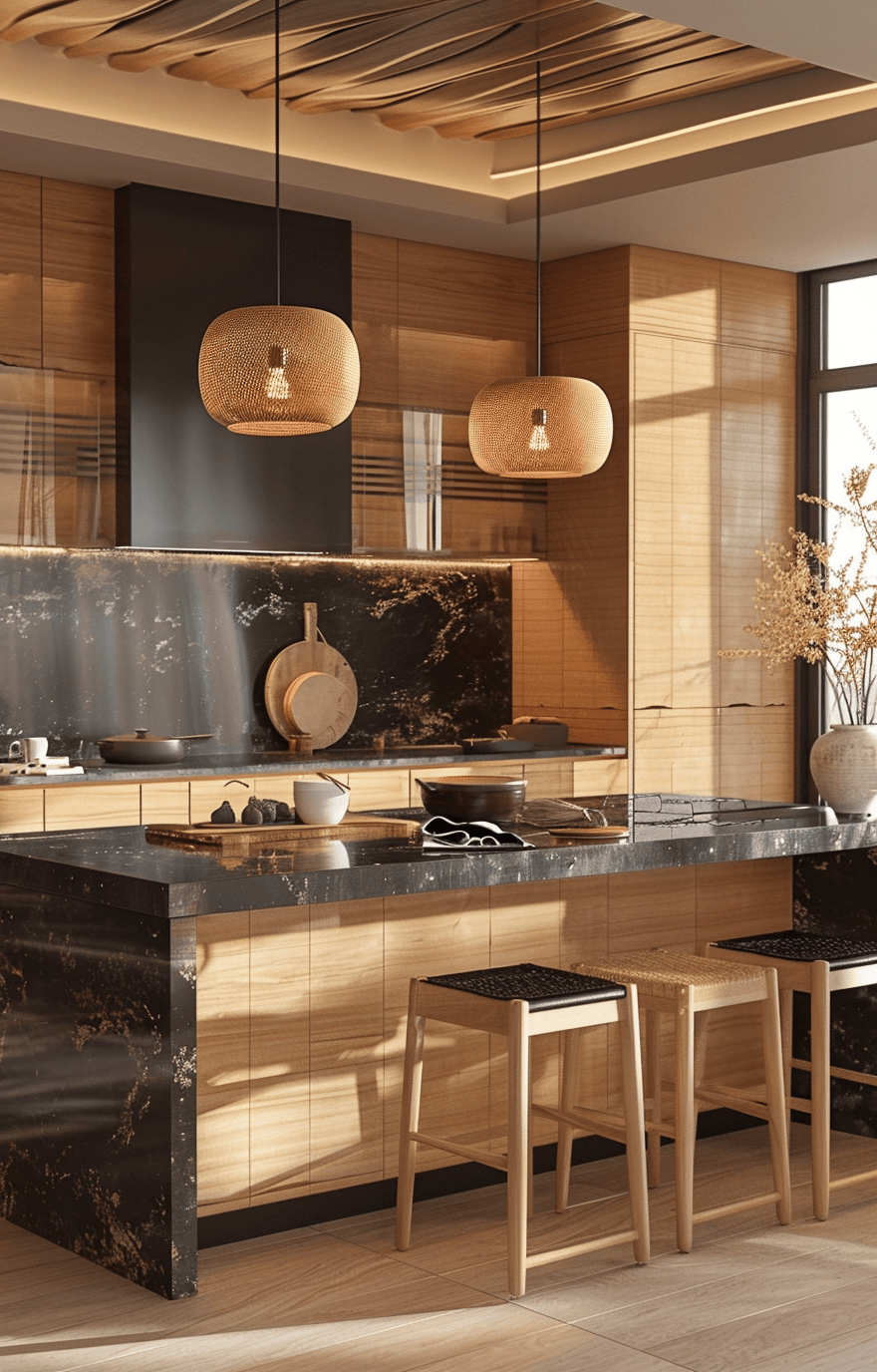 24/40
24/40
2. Accent Colors
Introduce black in hardware or fixtures for a modern touch. Accessories or a single feature wall in muted colors can add personality.
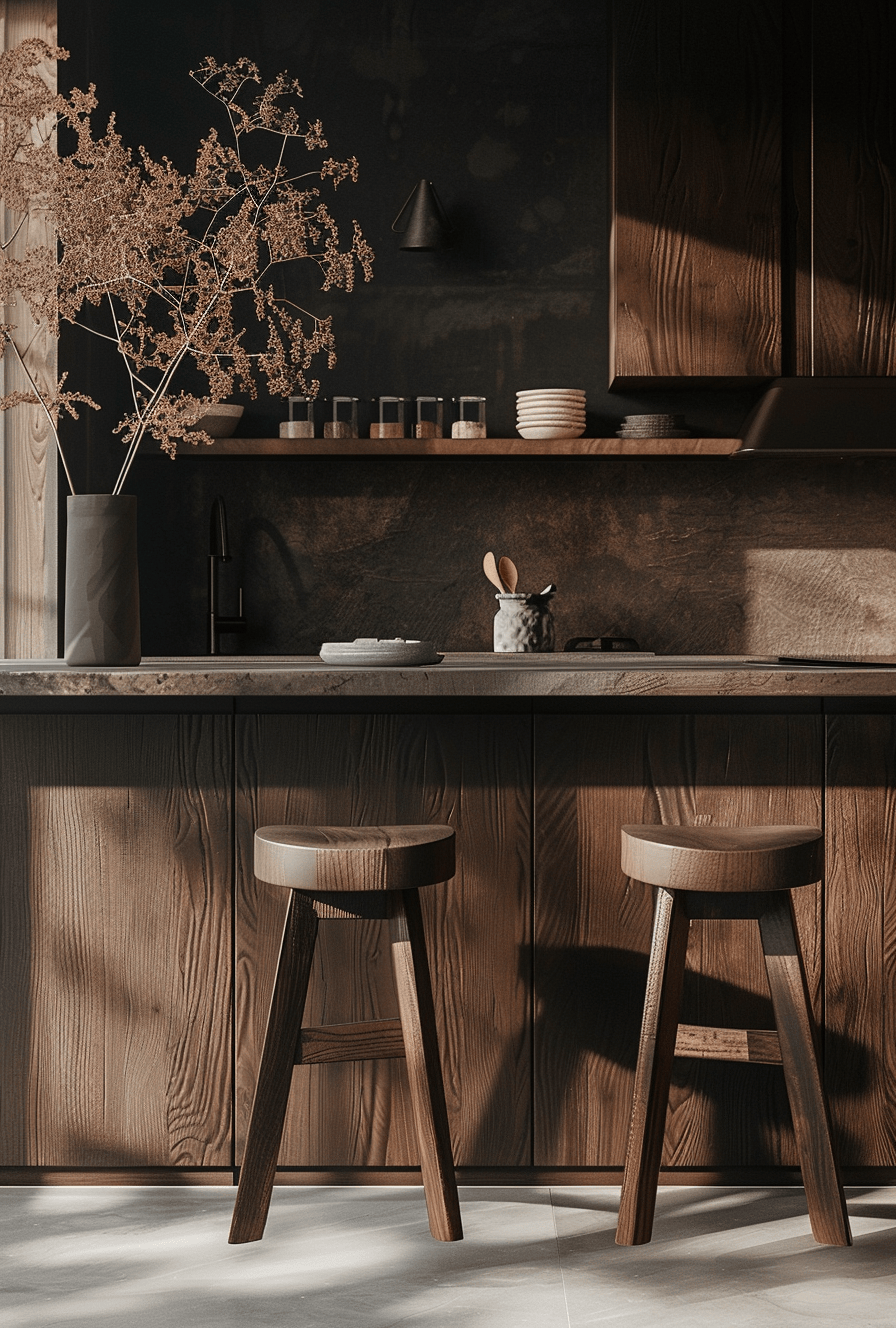 26/40
26/40
Dining Room
1. Furniture Choices
A wooden dining table and chairs in natural finishes embody the Japandi aesthetic. Soft chair cushions can add comfort and a splash of color.
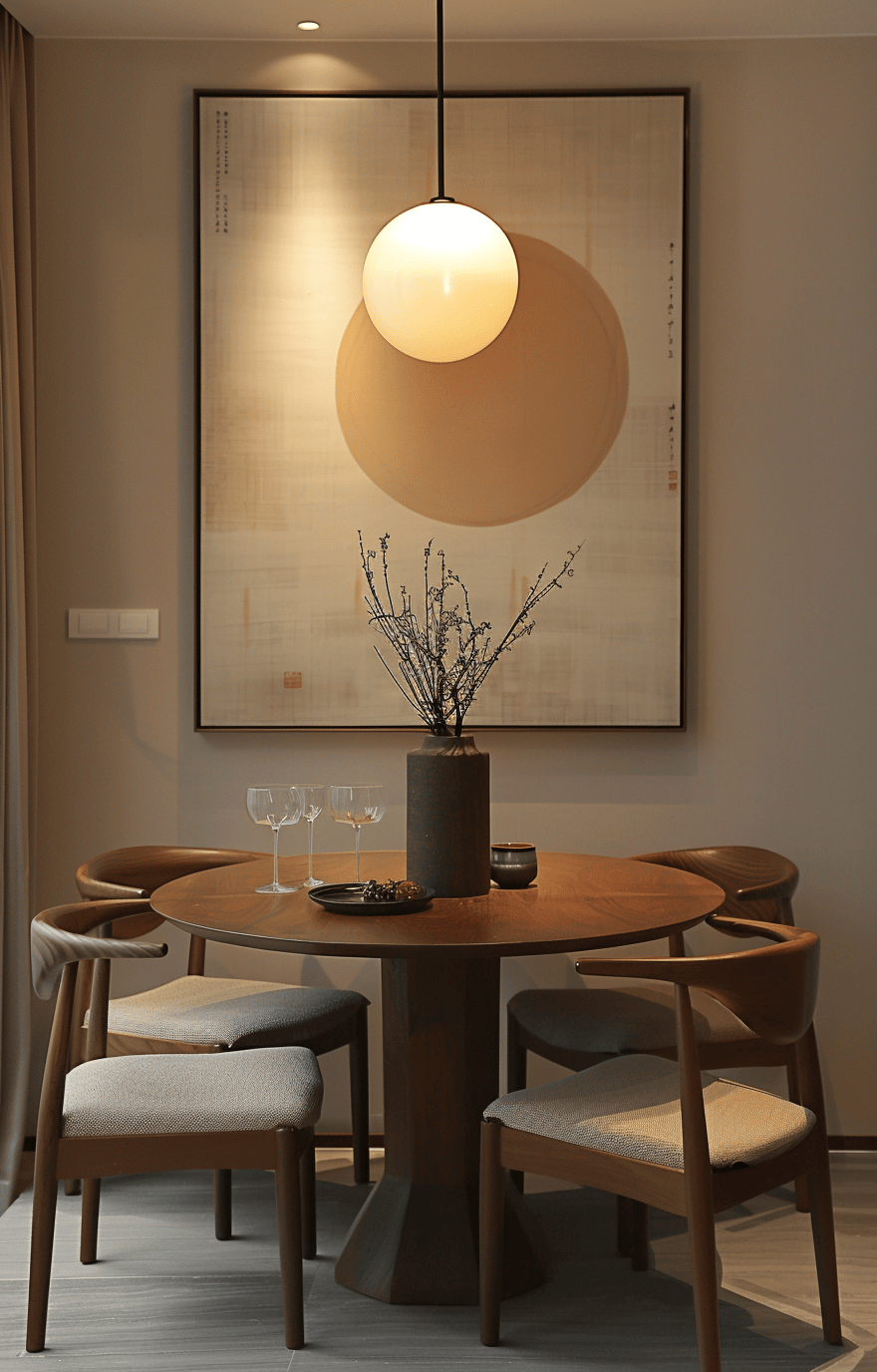 28/40
28/40
2. Lighting and Accessories
Use pendant lights with black accents for contrast. Table settings and textiles in Japandi colors can enhance the dining experience.
Tips and Best Practices
1. Selecting and Pairing Colors
Begin with neutral base colors like white, soft greys, and earthy tones. These serve as a versatile backdrop that can be easily adapted to different trends and seasons without straying from the Japandi aesthetic.
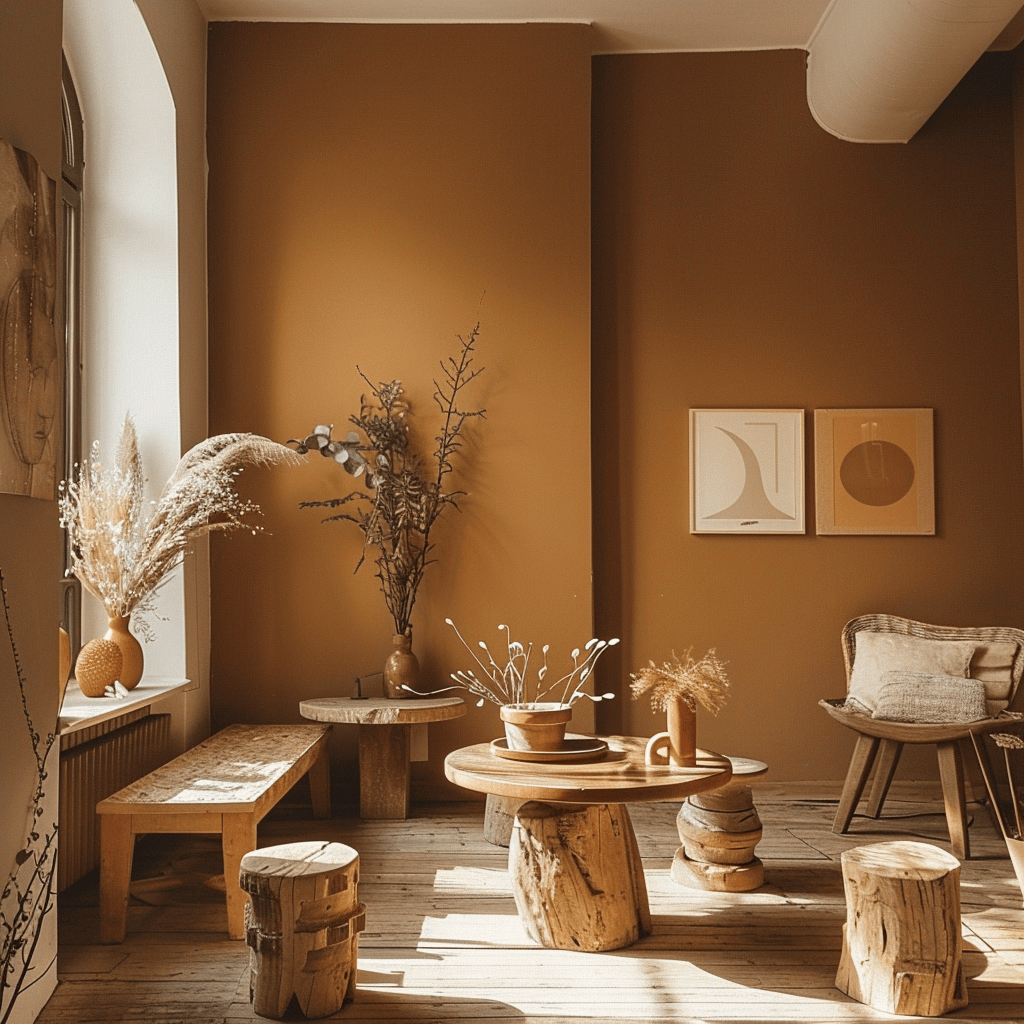 31/40
31/40
2. Add Depth with Natural Wood
Wood tones are central to Japandi design. Opt for furniture and accents in a variety of wood finishes to add warmth and texture. These natural elements pair well with virtually any color, acting as a bridge between neutral bases and more vibrant accents.
3. Incorporate Colors Thoughtfully
Use muted, nature-inspired colors for accents. Soft greens, blues, and pastel pinks can refresh the space for spring and summer, while deeper tones like burgundy or navy can make it cozier for fall and winter.
4. Mind the Balance
Ensure there's a balance between light and dark, warm and cool colors. Too much of one can overwhelm the space and detract from the Japandi style's calming effect.
5. Stay True to Core Values
Even when experimenting with seasonal color trends, keep the essence of Japandi in mind—simplicity, nature, and minimalism. Choose trend-inspired accents that can be easily swapped out, such as cushions, throws, or small decorative items.
6. Use Textiles to Your Advantage
Textiles are an excellent way to introduce seasonal colors and textures without permanent changes. Linen, wool, and cotton in seasonal hues can transform the feel of a room while staying true to Japandi principles.
7. Adapt with Accessories
Vases, artwork, and ceramics offer subtle ways to incorporate trendy colors. These can be updated as trends evolve, ensuring your space remains both modern and timeless.
Avoiding Common Pitfalls
1. Overcrowding with Color
One common mistake is adding too many colors or too much of a single color, which can create visual clutter. Stick to a limited palette and use colors sparingly to maintain the serene, minimalist vibe of Japandi.
2. Ignoring the Importance of Texture
Another pitfall is focusing solely on color and neglecting texture. In a Japandi space, textures add depth and interest, making the room feel warm and inviting even with a muted color scheme.
3. Forgetting About Lighting
Lighting can dramatically affect how colors appear in a room. Natural light enhances the true beauty of Japandi colors, while artificial lighting should be carefully chosen to complement these hues without altering their natural appearance.
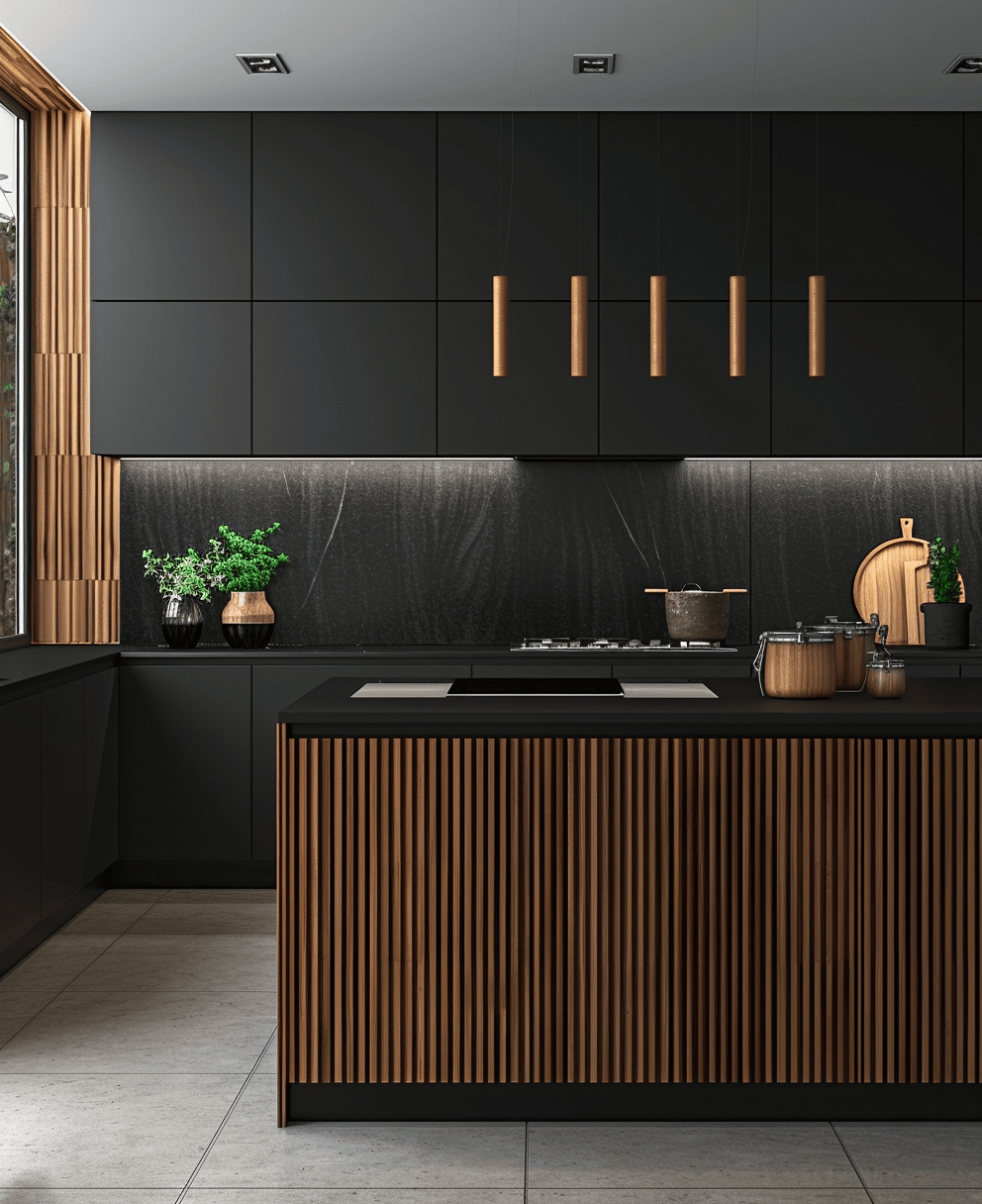 40/40
40/40
By adhering to these tips and best practices, you can skillfully incorporate the Japandi color palette into your home, ensuring a timeless design that gracefully accommodates seasonal trends without sacrificing its core aesthetic.




